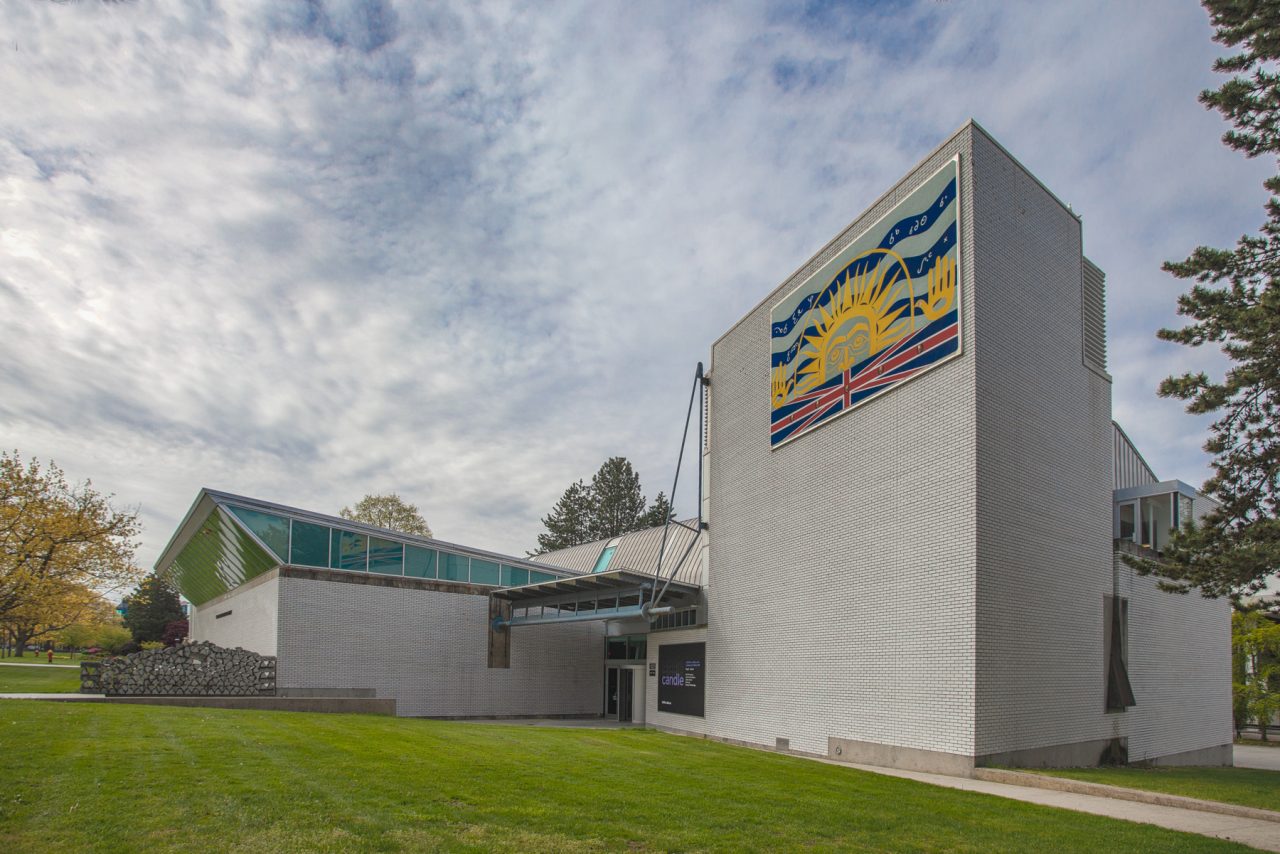21 Jun – 11 Aug 2024
Outdoor Screen: Nuxalk Radio
-
Banchi Hanuse
Banchi Hanuse is co-founder and station manager of Nuxalk Radio, a community radio station based out of the Nuxalk village of Q’umk’uts’ (Bella Coola). Hanuse holds a BA in First Nations Studies from UBC and has worked at the National Film Board as a production assistant and project coordinator.
Read More
Nuxalk Radio, 2021
video
3 m 9 s
Written and directed by Banchi Hanuse; produced by Lantern Films
Courtesy of Lantern Films
Written and directed by Banchi Hanuse and produced by Lantern Films, Nuxalk Radio documents a day in the life of 91.1 FM Nuxalk Radio, a community radio station established in 2014 with the slogan, “Lhulhamktulhs ala ts’ktaliwalh alh ti s-kulhulmcilh t’ayc n wa sulutilh ats (Broadcasting the laws of the lands and waters).” Broadcasting from the Nuxalk village of Q’umk’uts’ (Bella Coola) and online, Nuxalk Radio was founded to help keep the Nuxalk language alive through broadcasting news, local events and emergency messages relating to floods, forest fires, industrial disasters and tsunamis. Co-founder and station manager Banchi Hanuse outlines its overarching goal as the promotion of the Nuxalk language to “increase the fluency of semi-fluent Nuxalk language speakers, inspire new Nuxalk language learners, raise the prestige of the Nuxalk language and reaffirm the fact that the Nuxalk language is relevant today. Nuxalk Radio contributes positively to physical, mental, spiritual and emotional well-being while also asserting Nuxalk Nationhood by raising up our Nuxalk ancestral government, reclaiming and reoccupying our territory and promoting stewardship of our homelands.” Nuxalk Radio is the recipient of the Vancouver International Film Festival’s Sea to Sky Award and the Yorkton Film Festival’s Documentary Arts and Culture Golden Sheaf Award.
As part of the exhibition This Is An Emergency Broadcast, Banchi Hanuse’s Nuxalk Radio (2021) plays on the Outdoor Screen from 9 am to 9 pm daily.
-
Banchi Hanuse
Banchi Hanuse is co-founder and station manager of Nuxalk Radio, a community radio station based out of the Nuxalk village of Q’umk’uts’ (Bella Coola). Hanuse holds a BA in First Nations Studies from UBC and has worked at the National Film Board as a production assistant and project coordinator.
Read More
Related
-
Exhibition
21 Jun 2024 – 11 Aug 2024
This Is An Emergency Broadcast

The radio is a tool. Through receptive listening and attention there is potential for the creation of a community of receivers. In the act of transmission, there is agency and responsibility that is at once collective and individual, that works with echoes, waves, reverberations, repetitions, cycles, and is only meaningful when received. This Is An Emergency Broadcast connects Indigenous political advocacy with the forms of communication offered by community radio, countering power chronicles of state and corporate media and, in its self-determination, offering space for reignited narratives.
[more] -
Event
Saturday, 22 Jun 2024 at 2 pm
Listening Event with Lorna Brown

Artist Lorna Brown will lead a collective listening experience in This Is An Emergency Broadcast, offering an opportunity for witnessing in a context of advocacy and oral tradition.
[more] -
News
19 Jun 2024
Reading Room: This Is An Emergency Broadcast

This Is An Emergency Broadcast connects Indigenous political advocacy with the forms of communication offered by community radio, countering power chronicles of state and corporate media and, in its self-determination, offering space for reignited narratives. A project with artist and activist Marianne Nicolson (Musga̱maḵw Dzawada̱’enux̱w), This Is An Emergency Broadcast occupies the Belkin space with audio recordings that clarify a history of Indigenous articulation, collective organization and opposition to colonial forces.
[more] -
Event
25 Mar 2017, 1 pm
Artist Talk: Marianne Nicolson
Join artist Marianne Nicolson who will talk about two works in the exhibition To refuse/To wait/To sleep, Tunics of the Changing Tide (2007) in the Walter C. Koerner Library and The Sun is Setting on the British Empire (2016) on the facade of the Belkin Art Gallery. Watch the talk online.
[more] -
Event
Critical Image Forum Dialogue Series: Marianne Nicolson

As part of Critical Image Forum's Dialogue Series, this online conversation with Althea Thauberger, Musgamakw Dzawada’enuxw artist and activist Marianne Nicolson helps us understand how particular photographic acts, although initiated by Canadian colonial photographers, were used, by those depicted, as opportunities for assertions of political, cultural and territorial sovereignty during the potlatch ban in the early twentieth century.
[more] -
Exhibition
2017 – 2020
Marianne Nicolson: The Sun is Setting on the British Empire

Commissioned for the exhibition To refuse/To wait/To sleep (January 13-April 9, 2017), Marianne Nicolson reworks the British Columbia provincial flag by repositioning and inverting the Union Jack below a setting/rising sun that has been recreated with a Pacific Northwest Coast Indigenous aesthetic.
[more]